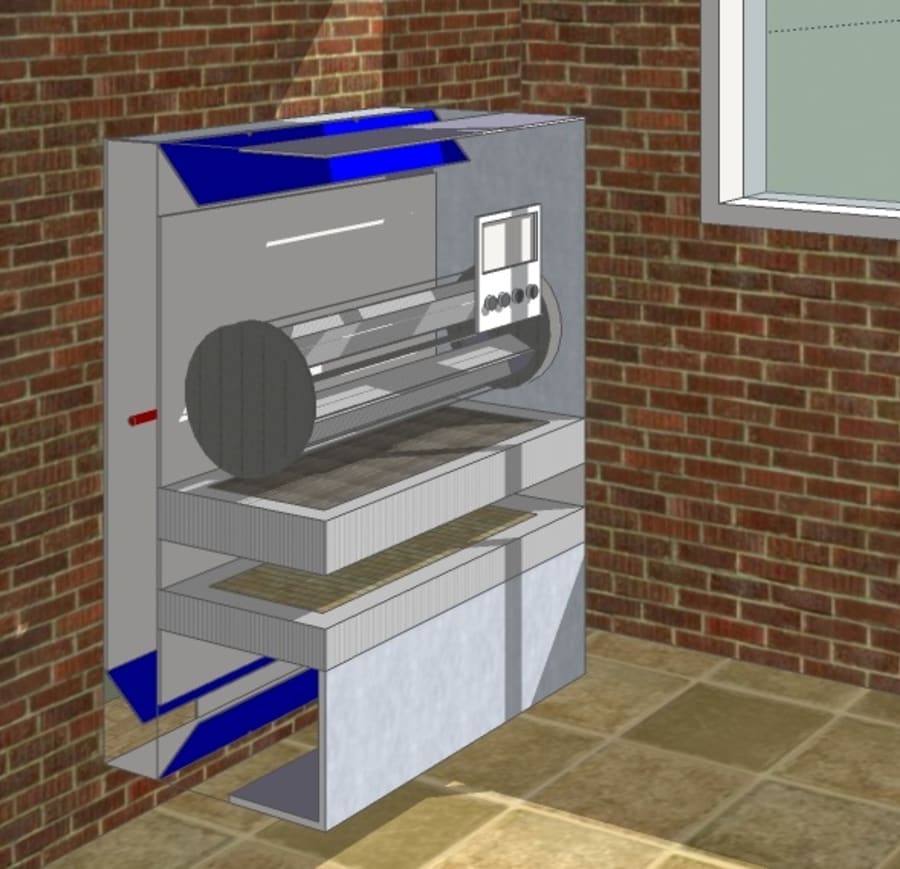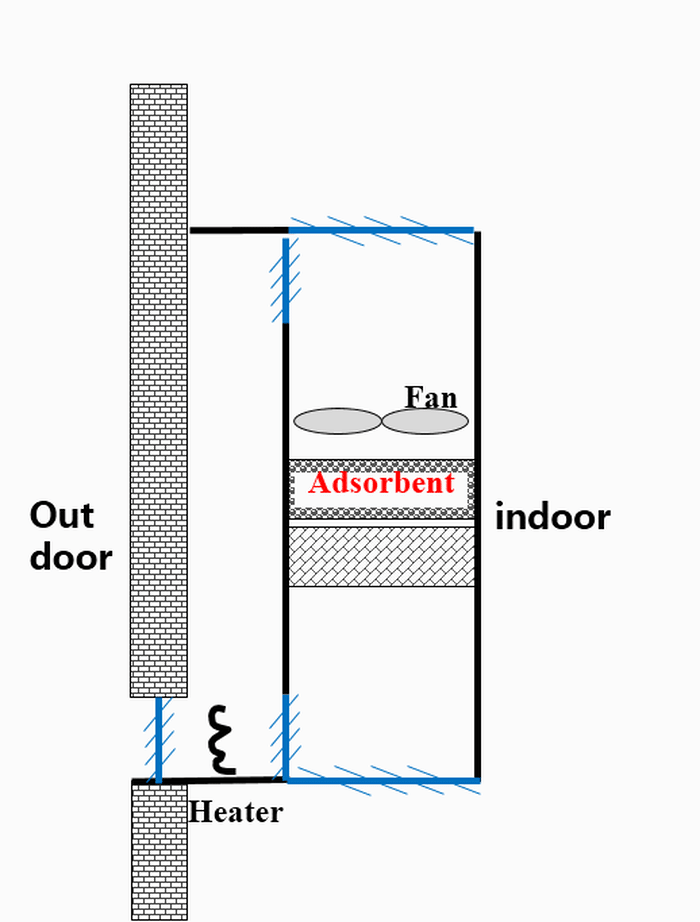
With the rapid urbanization and modernization in China, the residential building area has been growing constantly. Application of decorating materials indoor leads to severe volatile organic compounds (VOCs) and formaldehyde pollution, which have adverse health effect on people, including respiratory stimulation, immune stimulation and even cancer risk.
Adsorption technology is the most widely used technology in common purifiers, however, the life span of this kind of purifier is short, the absorbent needs to be replaced frequently, otherwise the purifying ability will decrease sharply, which limits the long term applications. This work aims to develop a new thermal-regenerated air purifier to remove indoor VOCs for long-term applications.
This purifier have four working modes: cleaning mode, thermal-regeneration mode, exhaust mode and fresh air mode. Cleaning mode is used in routine air purification. Indoor polluted air is driven into the purifier and passes through the adsorption filter and fan, respectively. The adsorption filter removes the indoor VOCs. The purifier is switched to thermal-regeneration Mode when adsorbent material reaches its saturation. The inlet and outlet of the air purifier are closed and the air inside the thermal-insulated purifier will continuously cycle and is heated up to 70 °C by an electrical heater, which will results in the desorption of adsorbed formaldehyde from the adsorption filter. The purifier is switched to exhaust mode after complete desorption. Air inside the purifier will be exhausted outside. Fresh Air Mode is controlled by residents. Outdoor fresh air is introduced indoor after filtration to dilute other indoor pollutants such as carbon dioxide, enhancing indoor air quality. All these four modes are controlled by 3 valves, the detail of the valve-changing process can be seen in Working Modes.gif in the attached files.
A small scale prototype purifier with commercial activated carbon as adsorbent was developed and the modes were controlled by a programmable logic controller (PLC). Formaldehyde as a common indoor pollutant is harmful and difficult to remove, thus formaldehyde purifying ability can reflect the purifier’s purifying performance of a variety of VOCs. So we took formaldehyde as target pollutant to test the performance of the prototype. Experimental results indicate that the CADR (Clean Air Delivery Rate) for formaldehyde of this prototype can reach 52.1m3/h and the removal efficiency remained stable after 3 cycles of adsorption and desorption. Compared with traditional purifiers without thermal regeneration, It effectively prolongs the life span with small and acceptable energy consumption. What’s more, the purifier reduces the adsorbent replacement frequency, showing great promise for energy conservation and emission reduction.
-
Awards
-
 2016 Top 100 Entries
2016 Top 100 Entries
Voting
-
ABOUT THE ENTRANT
- Name:Ru Xiao
- Type of entry:teamTeam members:Lin Lin Yuchen Shi Jiaqi Sun Dianshan Han
- Profession:
- Ru is inspired by:When I was in high school, my family moved into our new house, but with relatively high concentration of formaldehyde and VOCs . We thought air purifiers are too expensive especially for the filters, which need to be changed often, so we just used ventilation to dilute the pollution. After two months, I was diagnosed with anemia. This experience inspires me to solve the problem of indoor VOCs and formaldehyde pollution, it's my honor to use my design to help others avoid following my track.
- Software used for this entry:sketchup
- Patent status:patented








